How Often Should I Groom My Cat: Expert Advice
If you’re a cat owner, you’re probably wondering how often you should groom your cat. Grooming is an essential part of your cat’s hygiene and well-being, but how often you should groom your cat depends on several factors.
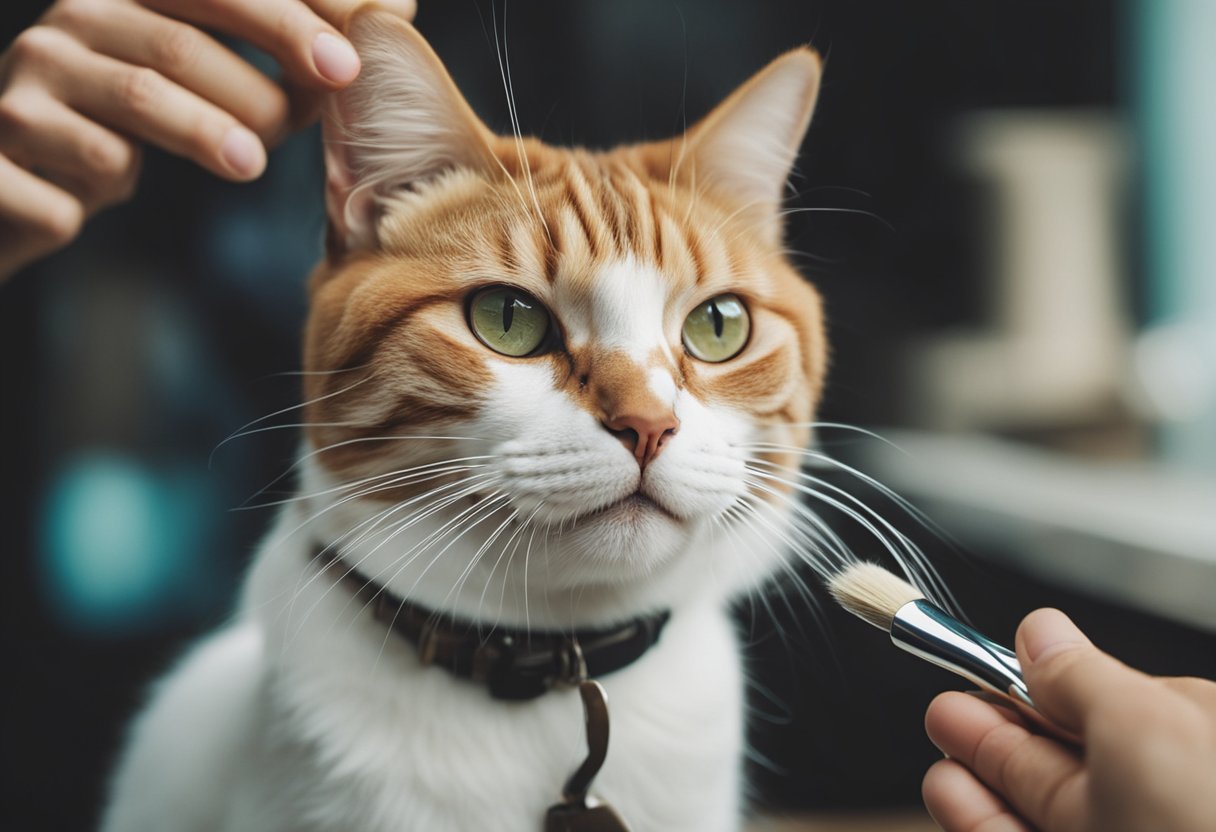
Understanding Cat Grooming is important to determine how often you should groom your cat. Grooming helps remove loose fur, dirt, and debris, prevents hairballs and long hair from matting, and keeps the coat free of dirt, debris, and external parasites. Regular grooming also helps distribute natural skin oils along the hair shafts, which keeps your cat’s coat healthy and shiny.
Key Takeaways
- Grooming is an essential part of cat hygiene and well-being.
- The frequency of grooming depends on the cat’s breed, coat type, and individual needs.
- Regular grooming helps distribute natural skin oils along the hair shafts, which keeps your cat’s coat healthy and shiny.
Understanding Cat Grooming
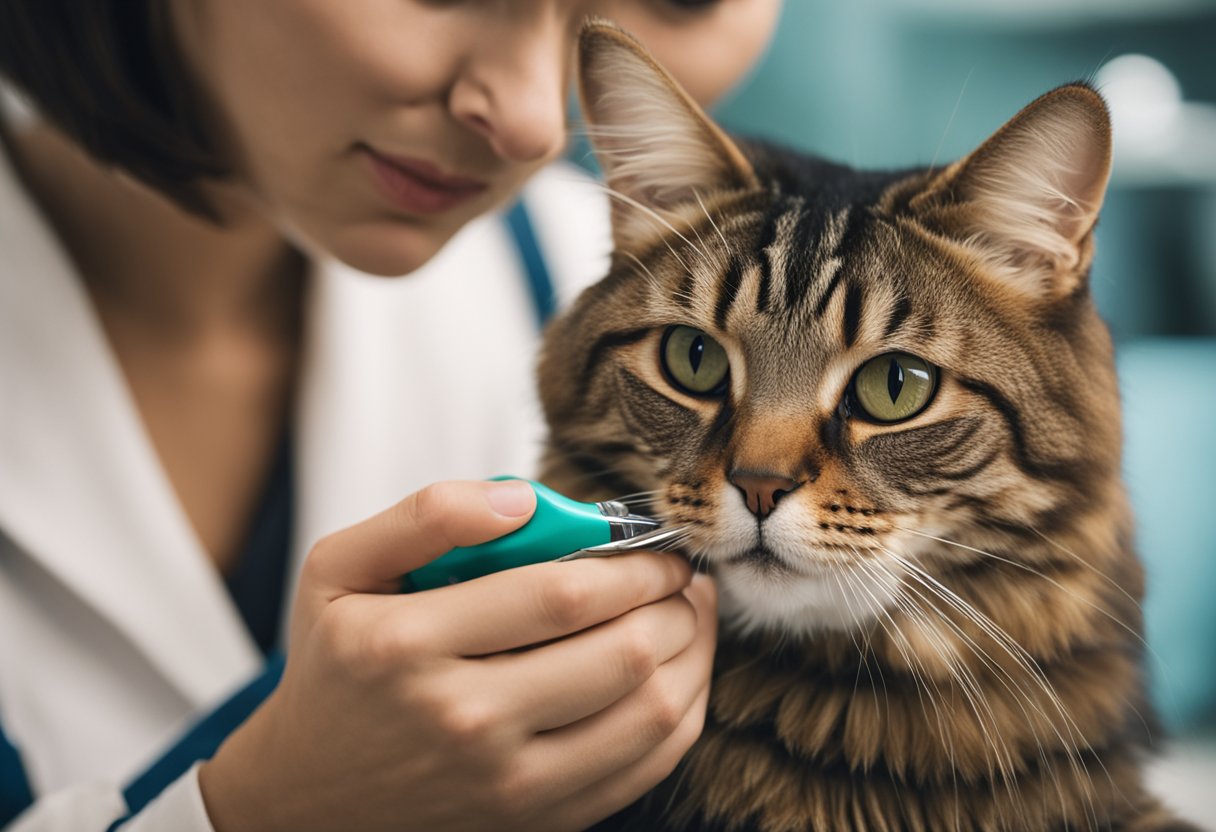
Grooming is an essential part of cat care. It helps to keep your cat’s coat clean, healthy, and free of mats and tangles. Regular grooming also helps to prevent hairballs and reduces the chances of skin infections.
Cats are naturally clean animals and groom themselves regularly by licking their fur. However, as a cat owner, you should also groom your cat regularly to help maintain their coat and overall health.
When grooming your cat, you should use the right tools, such as a comb, brush, and nail clippers. The type of tool you use will depend on your cat’s coat type and length. For example, long-haired cats require more grooming than short-haired cats.
It’s important to note that not all cats enjoy being groomed. Some cats may become agitated or stressed during grooming. Therefore, it’s important to approach grooming with patience and care. You can start by grooming your cat for short periods and gradually increasing the duration as they become more comfortable.
In summary, grooming your cat regularly is essential for their overall health and well-being. By using the right tools and approaching grooming with patience and care, you can help keep your cat’s coat healthy and free of mats and tangles.
Frequency of Grooming
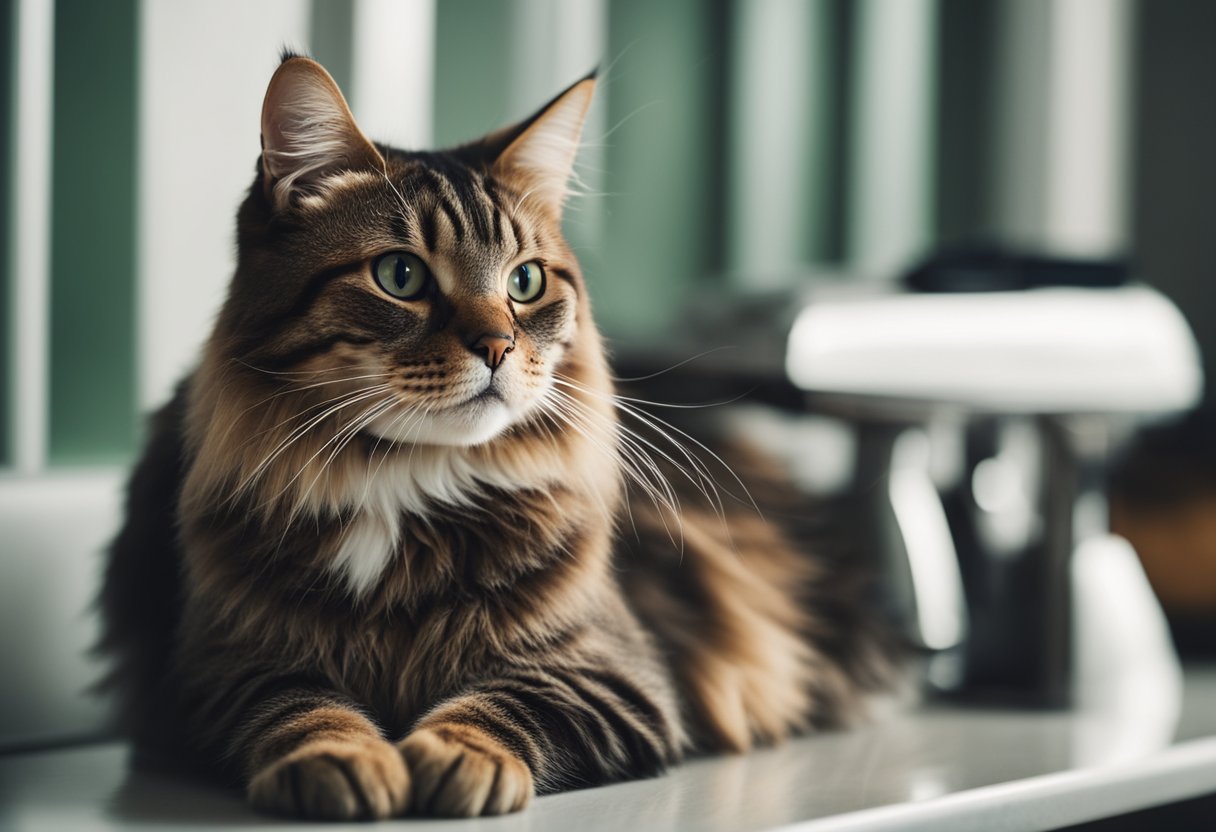
Grooming is an essential part of maintaining your cat’s health and hygiene. The frequency of grooming your cat depends on several factors, including the breed, coat type, and individual needs. In this section, we will discuss how often you should groom your cat based on its coat length.
Short-Haired Cats
Short-haired cats are low-maintenance when it comes to grooming. They usually groom themselves regularly, and you may only need to brush them once a week. Regular brushing helps to remove loose hair and prevent hairballs. It also helps to distribute natural oils throughout the coat, keeping it shiny and healthy.
Long-Haired Cats
Long-haired cats require more attention when it comes to grooming. Their coats tend to mat easily, and they are prone to hairballs. Regular brushing is essential to prevent matting and hairballs. You should brush your long-haired cat at least once a day to keep its coat healthy and shiny.
In addition to brushing, long-haired cats may benefit from a bath at the groomer up to four times a year. Professional groomers or your veterinarian can help if your cat becomes very matted or if they won’t tolerate brushing at home.
Overall, grooming your cat regularly is an important part of keeping your pet healthy and happy. By following these guidelines, you can ensure that your cat’s coat remains healthy and free of mats and tangles.
Tools and Equipment
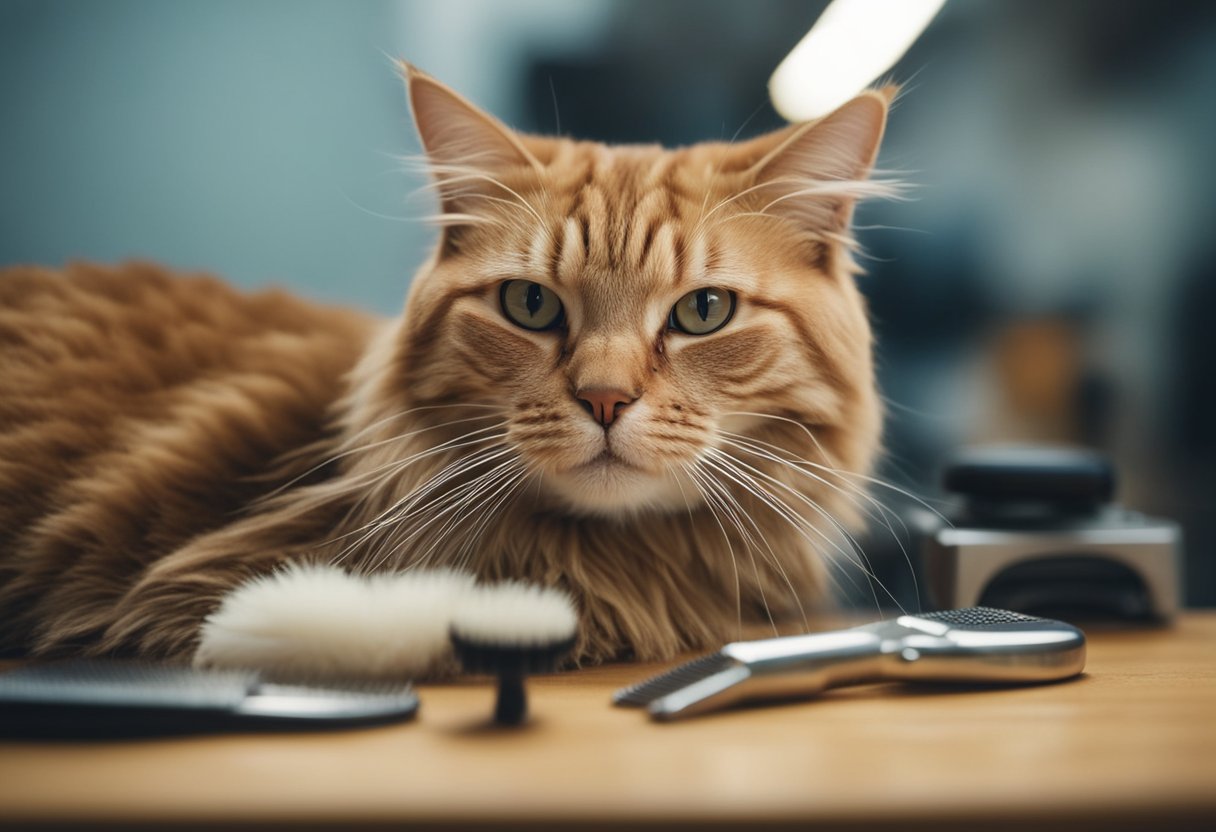
When it comes to grooming your cat, having the right tools and equipment can make all the difference. Here are some essential items you’ll need to keep your cat looking and feeling their best.
Brushes and Combs
Brushes and combs are essential for removing loose fur, dirt, and tangles from your cat’s coat. For short-haired cats, a fine-toothed flea comb and soft brush should be sufficient. For long-haired and medium-haired cats, you may also need a wide-toothed comb and longer brushes.
When choosing a brush or comb, look for one with soft bristles or teeth to avoid irritating your cat’s skin. You can also consider using a de-shedding tool to remove excess fur during shedding season.
Grooming Gloves
Grooming gloves are a great alternative to traditional brushes and combs. They allow you to massage your cat’s skin while removing loose fur and dirt. Plus, many cats enjoy the sensation of being petted with a grooming glove.
When choosing grooming gloves, look for ones with soft, flexible bristles that won’t scratch your cat’s skin. You can also consider using a glove with a textured surface for added grip.
Nail Clippers
Keeping your cat’s nails trimmed is an important part of their grooming routine. Overgrown nails can cause discomfort and even lead to injury. Nail clippers designed specifically for cats are essential for this task.
When choosing nail clippers, look for ones with a sharp, curved blade that will make clean cuts without crushing the nail. You can also consider using a nail file to smooth any rough edges after clipping.
With these essential tools and equipment, you’ll be well on your way to keeping your cat looking and feeling their best.
Grooming Techniques
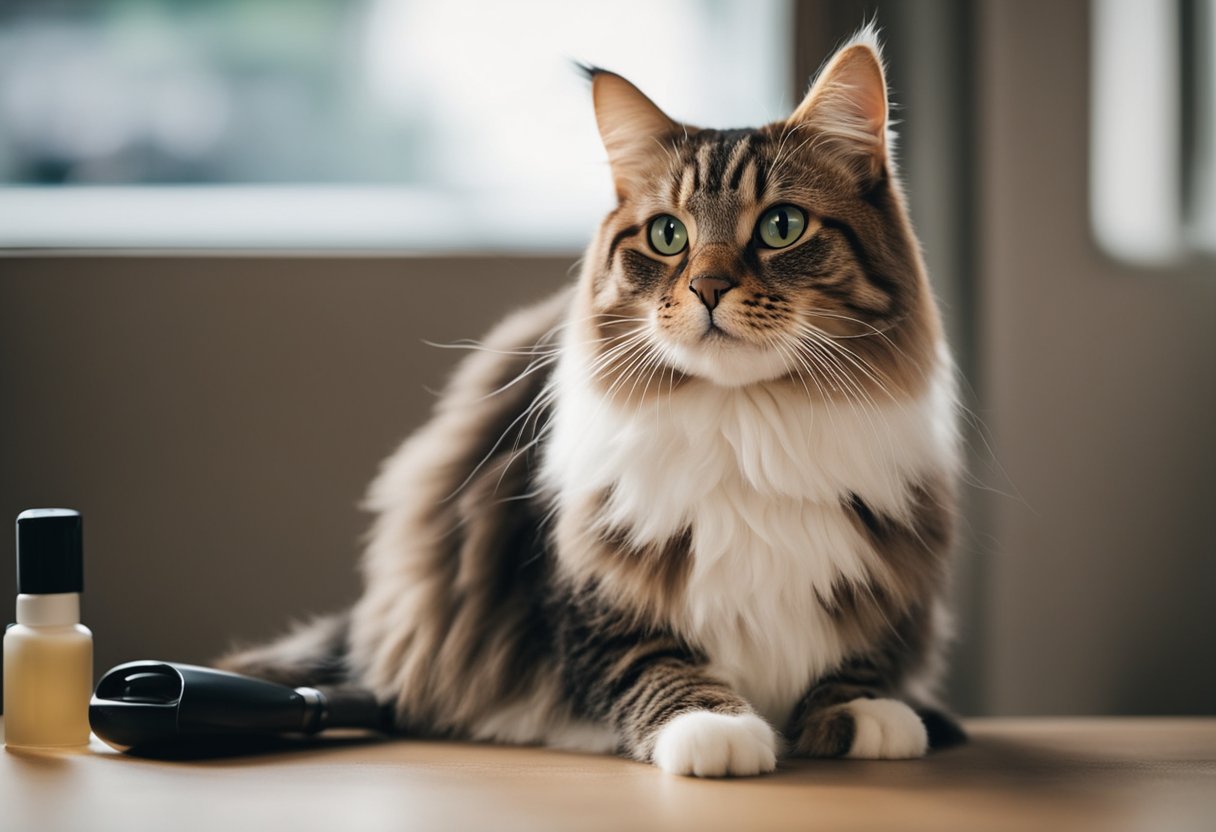
Cats are generally clean animals that groom themselves regularly. However, as a responsible cat owner, it is important to groom your cat regularly to ensure that they are healthy and happy. Here are some grooming techniques that you can use to keep your cat looking and feeling their best.
Brushing
Brushing your cat is an essential part of their grooming routine. It helps to remove loose hair, dirt, and debris from their coat, preventing hairballs and matting. How often you should brush your cat depends on their coat length and type. Long-haired cats may require daily brushing, while short-haired cats may only need to be brushed once a week.
To brush your cat, use a soft-bristled brush or a comb specifically designed for cats. Start at the head and work your way down to the tail, brushing in the direction of hair growth. Be gentle around sensitive areas like the face, ears, and belly.
Bathing
Bathing your cat is not always necessary, but it can be helpful for cats with skin conditions or those who get into messy situations. How often you should bathe your cat depends on their lifestyle and coat type. Some cats may only need to be bathed once or twice a year, while others may require more frequent baths.
When bathing your cat, use a shampoo specifically designed for cats. Avoid getting water and soap in their eyes, ears, and nose. Rinse thoroughly and dry your cat with a towel or hairdryer on a low heat setting.
Nail Trimming
Trimming your cat’s nails is important for their health and safety. Overgrown nails can cause discomfort and pain, and can even lead to infection or injury. How often you should trim your cat’s nails depends on their lifestyle and how fast their nails grow.
To trim your cat’s nails, use a pair of cat nail clippers. Hold your cat gently but firmly and trim the tips of their nails, being careful not to cut the quick (the pink part of the nail that contains blood vessels and nerves). If you are unsure about how to trim your cat’s nails, ask your veterinarian for advice.
Ear Cleaning
Cleaning your cat’s ears is important for preventing ear infections and other ear problems. How often you should clean your cat’s ears depends on their lifestyle and how much wax they produce.
To clean your cat’s ears, use a cotton ball or a soft cloth moistened with a gentle ear cleaning solution specifically designed for cats. Gently wipe the inside of your cat’s ear, being careful not to insert anything into the ear canal. If you notice any signs of infection or inflammation, contact your veterinarian for advice.
Remember, grooming your cat is an important part of their overall health and well-being. By using these grooming techniques, you can help keep your cat healthy, happy, and looking their best.
Professional Grooming
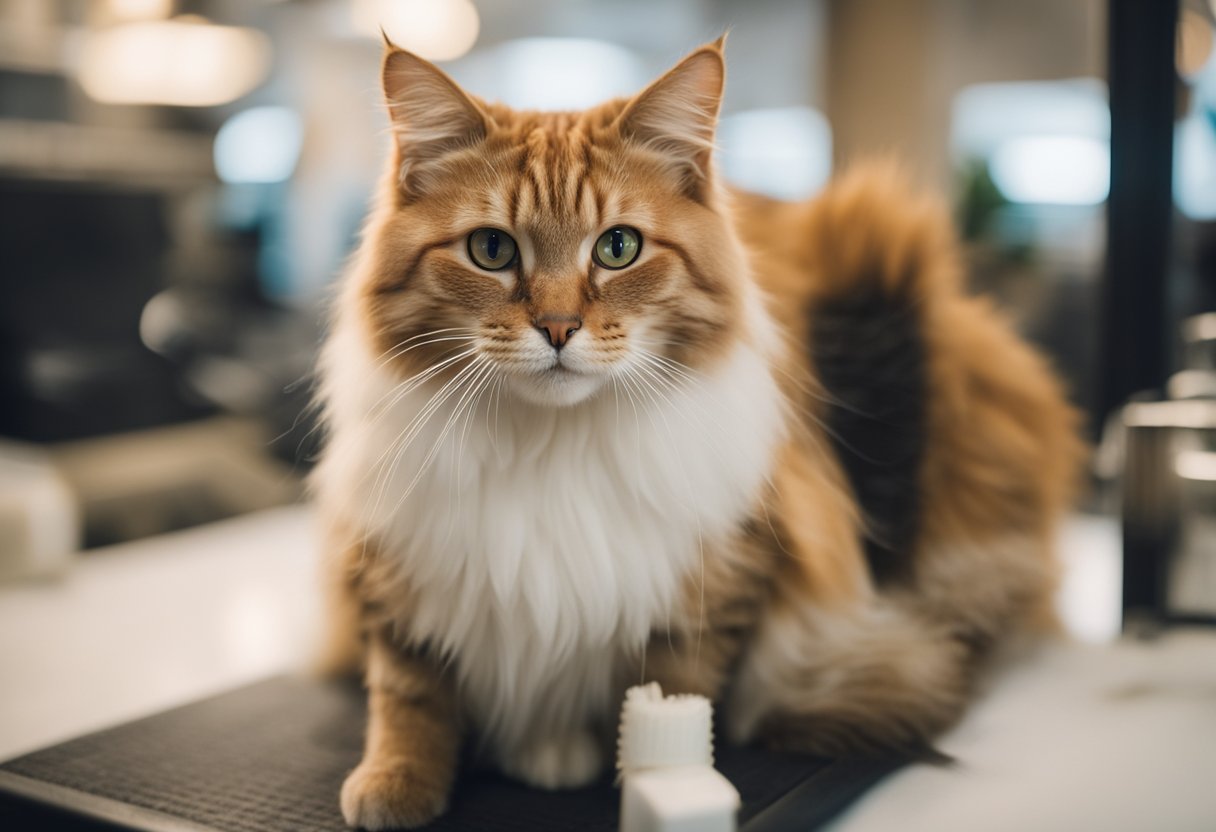
While at-home grooming is often sufficient for most cats, there are advantages to seeking professional grooming services. Professional groomers have extensive knowledge and experience in cat grooming techniques, ensuring a high-quality grooming session. They have the right tools and products to keep your cat’s coat clean, healthy, and mat-free.
Professional grooming can also help identify any underlying health issues that may not be visible to the untrained eye. A professional groomer can detect skin irritations, fleas, ticks, or other skin issues that may require veterinary attention.
If you have a long-haired or thick-coated cat, professional grooming may be necessary to keep their coat in good condition. Long-haired cats are prone to matting, which can lead to skin irritation and infection. A professional groomer can help prevent matting by using the right tools and techniques to keep your cat’s coat tangle-free.
Professional grooming can also be beneficial for cats who are difficult to groom at home. Cats who are nervous, anxious, or resistant to grooming can benefit from the calm and soothing environment of a professional grooming salon. Professional groomers have experience handling all types of cats, including those who are difficult to handle.
Overall, professional grooming can be a valuable addition to your cat’s grooming routine. It can help keep your cat’s coat healthy, identify any underlying health issues, and provide a stress-free grooming experience for your feline friend.
Health and Behavior Considerations
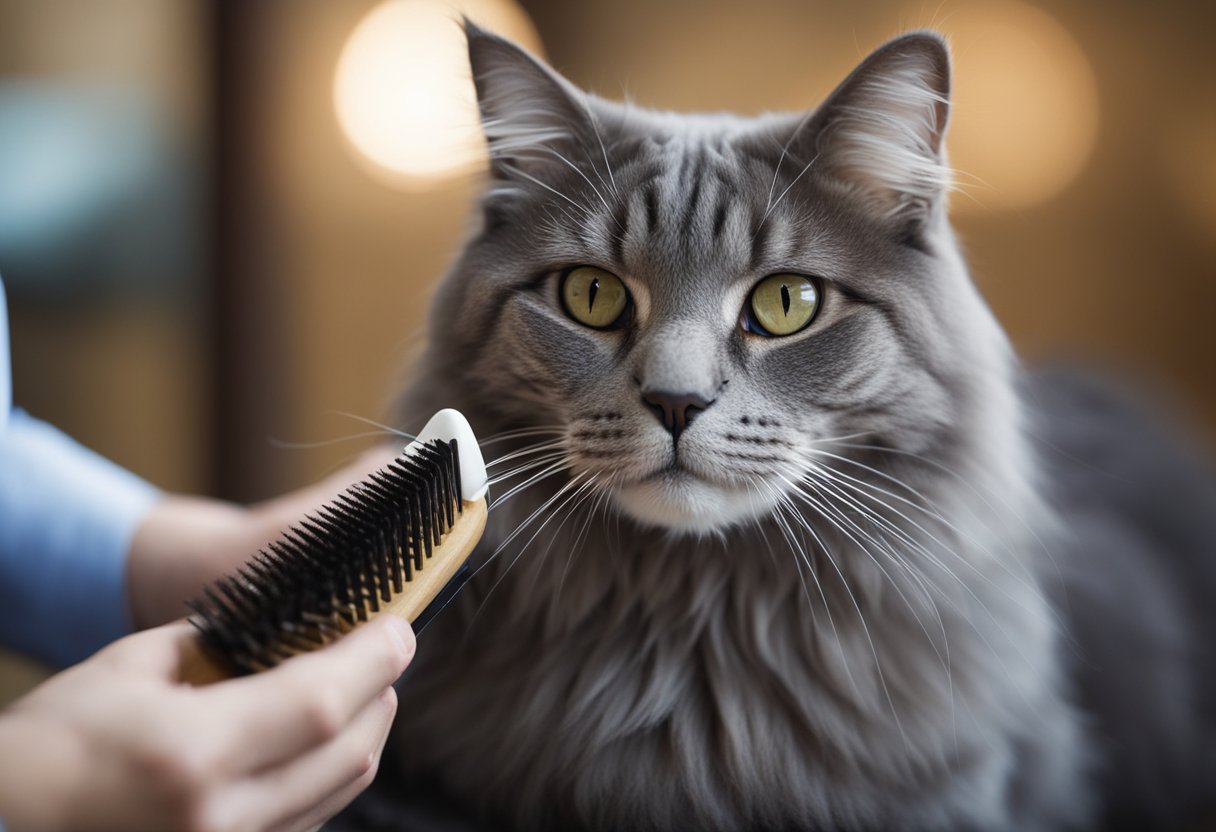
As a responsible cat owner, it’s essential to groom your cat regularly to maintain their health and well-being. Grooming helps remove loose fur, dirt, and debris, preventing hairballs and long hair from matting. In this section, we’ll discuss some health and behavior considerations to keep in mind when deciding how often to groom your cat.
Skin Conditions
Cats can develop various skin conditions that require regular grooming to manage. Skin problems can range from mild irritation to severe infections, and grooming can help prevent these issues. Regular grooming can also help identify any skin problems early on, allowing you to seek veterinary care promptly.
Matting and Knots
Matting and knots can cause discomfort and even pain for your cat. Long-haired cats are especially prone to matting, and grooming is essential to prevent this issue. Matting can lead to skin irritation, infections, and even hair loss. Regular brushing and grooming can help prevent matting and keep your cat’s coat healthy and shiny.
Stress and Anxiety
Cats can become stressed and anxious during grooming sessions, especially if they are not used to being handled. It’s essential to take things slow and make grooming a positive experience for your cat. Start with short sessions and gradually increase the duration over time. Use treats and positive reinforcement to help your cat associate grooming with a positive experience.
In conclusion, grooming your cat regularly is essential for their health and well-being. Keep in mind the health and behavior considerations discussed above to determine how often to groom your cat. By taking a proactive approach to grooming, you can help prevent skin problems, matting, and stress and anxiety for your feline friend.
Seasonal Grooming
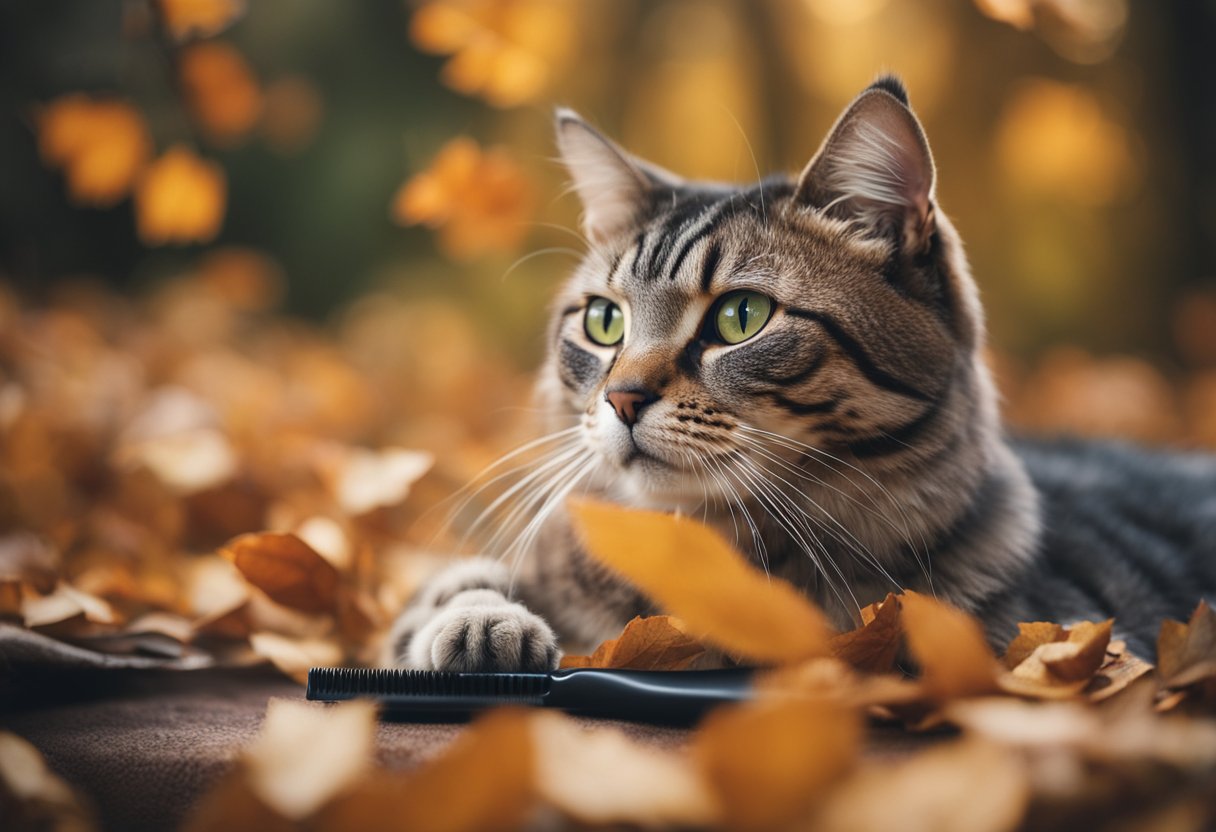
Cats are known for their fastidious grooming habits, but sometimes they need a little help from their owners. The frequency of grooming your cat depends on a number of factors, including the length of their coat, their age, and the season.
During the winter months, cats tend to shed less and their skin can become dry and flaky. It’s important to brush your cat regularly during this time to help distribute their natural oils and prevent matting. You may also want to consider using a moisturizing shampoo or conditioner to keep their skin healthy.
In the spring and summer, cats tend to shed more as they lose their winter coat. This is a good time to brush your cat more frequently to help remove loose fur and prevent hairballs. You may also want to consider giving your cat a bath to help remove any dirt or debris that may have accumulated on their coat.
During the fall, cats may shed their summer coat in preparation for the winter. This is another good time to brush your cat regularly to help remove loose fur and prevent matting. You may also want to consider using a deshedding tool to help remove excess fur.
Overall, it’s important to groom your cat regularly to help keep their coat healthy and prevent matting. By paying attention to the season and your cat’s individual needs, you can ensure that they look and feel their best all year round.
Age-Related Grooming Needs
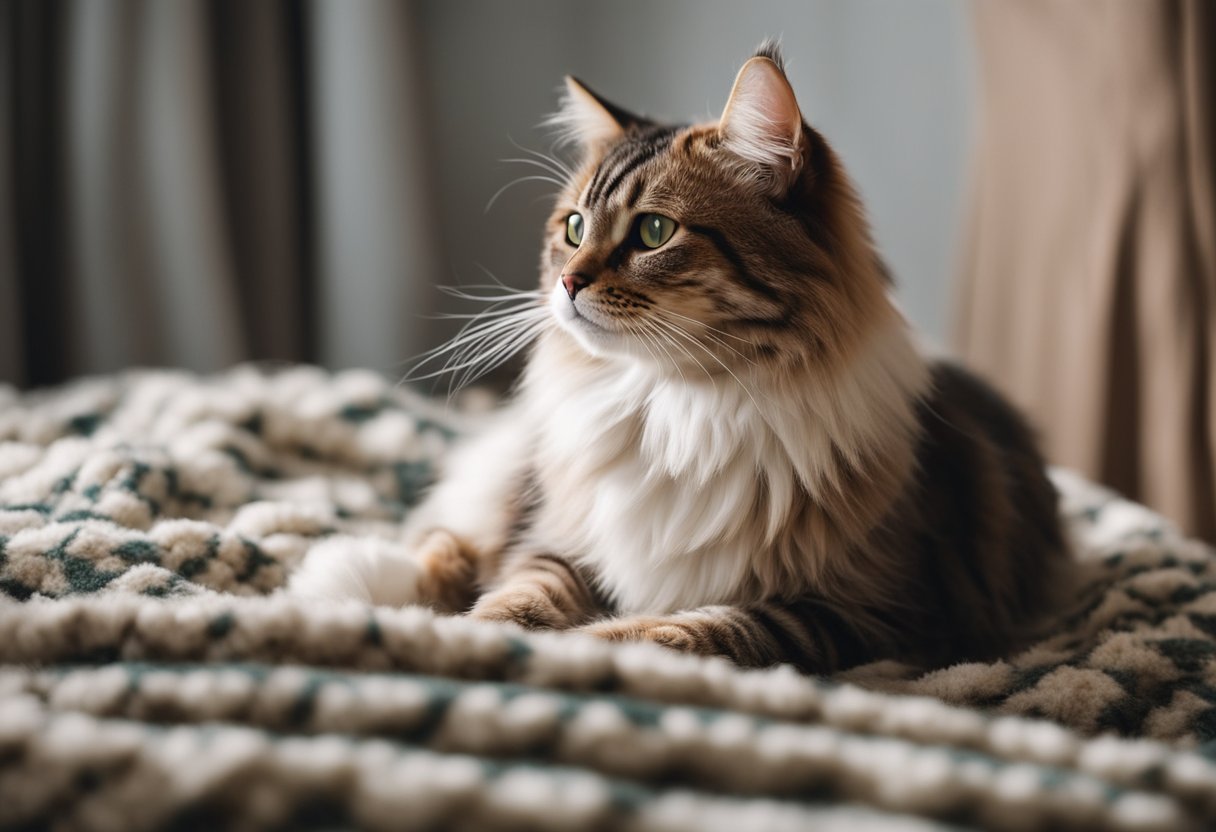
As cats age, their grooming needs change. Older cats may develop arthritis or other mobility issues that make it difficult for them to groom themselves effectively. This can lead to matting, skin odor, and inflammation. In addition, the skin of an older cat is thinner and less elastic, which can make it more prone to infection.
To keep your senior cat healthy and comfortable, it’s important to adjust their grooming routine as they age. Here are some age-related grooming needs to keep in mind:
Brushing
Regular brushing can help prevent matting and remove loose fur, dirt, and debris from your cat’s coat. For older cats, it’s important to be gentle and avoid sensitive spots. Start at the head and work your way down to the tail, using a soft-bristled brush or comb. Be extra gentle when brushing around the hind legs, hips, and underbelly.
Bathing
While some cats may never need a bath, others may benefit from a bath every few months. Older cats may need more frequent bathing if they are unable to groom themselves effectively. Use a cat-specific shampoo and conditioner, and be sure to rinse your cat thoroughly.
Nail Trimming
As cats age, their claws may become overgrown, thick, and brittle. This can make it difficult for them to walk and groom themselves. Regular nail trimming can help prevent this problem. Use cat-specific nail clippers and be sure to avoid cutting the quick (the pink part of the nail that contains blood vessels and nerves).
By adjusting your cat’s grooming routine as they age, you can help keep them healthy, comfortable, and happy.
Frequently Asked Questions
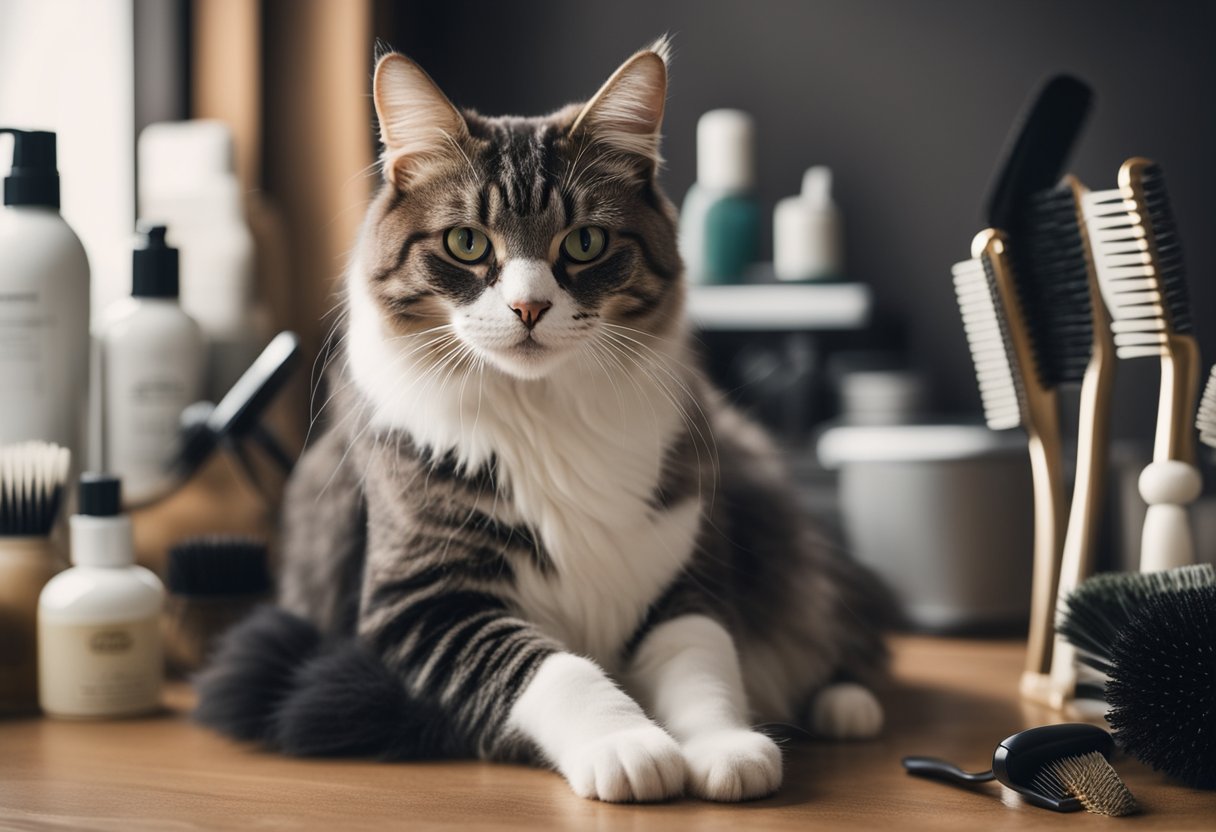
How often should a cat be professionally groomed?
Professional grooming is recommended for cats with long hair or thick coats. According to cats.com, medium-haired cats and long-haired cats can benefit from a bath at the groomer up to four times a year. However, the frequency of professional grooming depends on the cat’s coat type, lifestyle, and grooming habits.
What is the recommended frequency for brushing a cat’s coat?
Brushing your cat’s coat regularly can help prevent hairballs, matting, and skin problems. The frequency of brushing depends on the cat’s coat type and length. According to cooperandgracie.com, on average, a cat spends 15-50% of its waking hours grooming. However, some cats may require daily brushing to prevent matting and shedding.
Is it necessary to groom an indoor cat regularly?
Indoor cats may not require as much grooming as outdoor cats, but regular grooming is still important for their health and well-being. Indoor cats can still develop hairballs, skin problems, and matting. According to the ASPCA, one or two brushings per week will help keep your cat healthy.
How frequently should I bathe my cat for optimal health?
Bathing your cat too frequently can strip their coat of natural oils and cause skin irritation. According to VCA Animal Hospital, routine bathing is not necessary for most cats. However, if your cat gets into something dirty or smelly, a bath with a mild cat shampoo may be necessary. It is recommended to bathe your cat no more than once every 4-6 weeks.
Should I be concerned about the amount of self-grooming my cat does?
Cats are natural groomers and spend a significant amount of time grooming themselves. However, excessive grooming can be a sign of stress, anxiety, or a medical condition. According to catsbandit.com, if you notice your cat grooming excessively or developing bald patches, it is best to consult with your veterinarian.
Is it advisable to trim the hair around my cat’s rear area?
Trimming the hair around your cat’s rear area can help prevent fecal matter from getting stuck and causing hygiene problems. However, it is important to be cautious when trimming your cat’s hair. According to cats.com, if you are not comfortable trimming your cat’s hair, it is best to have a professional groomer or veterinarian do it for you.
People also ask
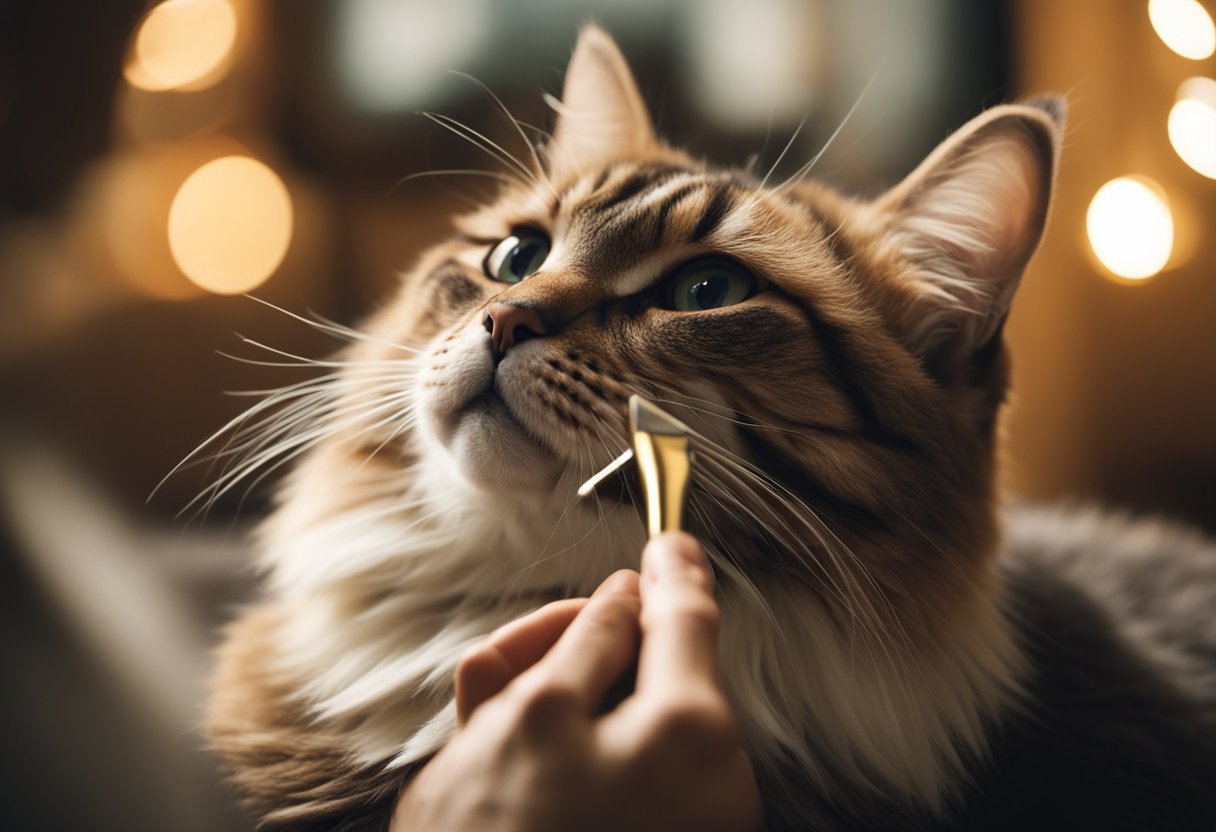
As a cat owner, you might have some questions about how often you should groom your cat. Here are some common questions people ask about cat grooming:
How often should I take my cat to the groomers?
According to Cats.com, how often you take your cat to the groomer depends on your cat’s breed, coat type, and lifestyle. Short-haired cats may only need to visit the groomer once or twice a year, while long-haired cats may need to go more often. If your cat has trouble grooming themselves or has a medical condition that affects their coat, they may need to go more frequently.
How often should a cat be brushed?
Brushing your cat regularly can help keep their coat healthy and reduce the amount of hairballs they produce. ASPCA recommends brushing your cat at least once a week, but some cats may need to be brushed more often. Long-haired cats may need to be brushed daily to prevent matting.
Should I groom my indoor cat?
Yes, even indoor cats need to be groomed. Grooming helps remove loose fur, dirt, and debris from your cat’s coat, which can help prevent hairballs and matting. It also gives you a chance to check for any lumps, bumps, or skin issues that may require veterinary attention. Cat Bandit recommends brushing your cat’s teeth at home to keep their teeth and gums healthy.
Do cats need haircuts?
Most cats do not need haircuts. However, some long-haired cats may benefit from a trim to prevent matting or to keep their coat more manageable. If you’re not sure whether your cat needs a haircut, consult with a professional groomer or your veterinarian.
Resources :
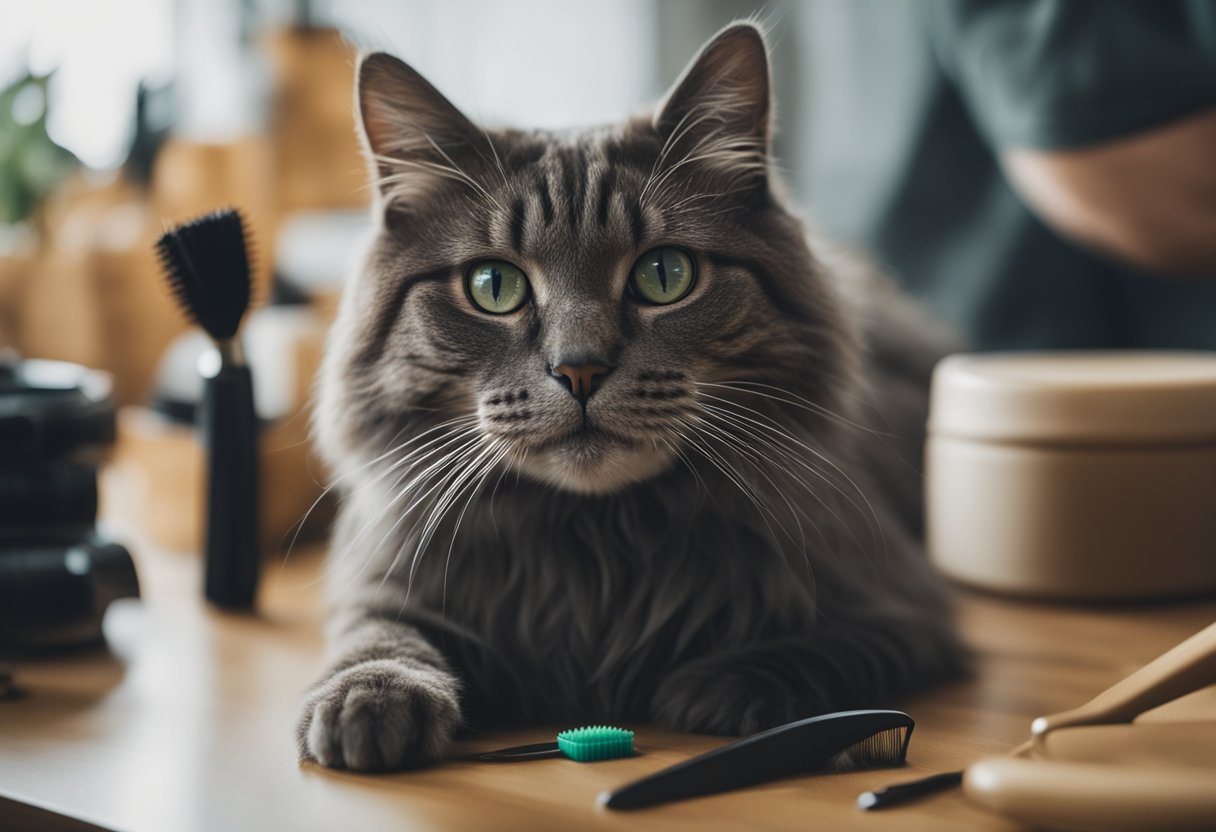
Taking care of your cat’s grooming needs is an important part of being a responsible pet owner. Here are some resources to help you determine how often you should groom your cat:
- Cats.com recommends that medium-haired cats and long-haired cats can benefit from a bath at the groomer up to four times a year. Professional groomers or your veterinarian can help if your cat becomes very matted or if they won’t tolerate brushing at home.
- The ASPCA suggests that regularly grooming your cat and vacuuming hair from your house should minimize the inconvenience of shedding. However, if you see bald patches in your cat’s fur or notice a significant loss of hair, the underlying cause may be a health-related problem and should be investigated by a veterinarian.
- According to VCA Animal Hospital, all cats benefit from regular brushing to remove loose hairs and dead skin cells, keep the coat free of dirt, debris, and external parasites, and distribute natural skin oils along the hair shafts. Cats with long, silky, or curly coats require daily brushing to keep their hair from becoming tangled or matted.
- Cat Bandit suggests that the frequency of grooming visits will depend on several factors, including your cat’s breed, coat type, and individual needs. As a general guideline, most cats benefit from a grooming session every 4-6 weeks. However, long-haired breeds may require more frequent grooming.
- Cooper and Gracie recommend that while you might think that grooming is solely a cat’s personal endeavor, the environment they live in plays a crucial role too. Specifically, changes in climate can have a direct impact on how often a cat feels the need to groom itself. In warmer climates or during the hot summer months, you may notice your cat grooming more frequently.
By using these resources, you can determine the best grooming schedule for your cat and ensure that they stay healthy and happy. Remember to always consult with your veterinarian if you notice any changes in your cat’s grooming habits or if you have any concerns about their health.
Conclusion

In conclusion, grooming your cat is an essential part of maintaining their overall health and well-being. Regular grooming not only keeps their coat looking shiny and healthy, but it also helps prevent hairballs, matting, and external parasites.
Based on your cat’s breed, coat type, and individual needs, the frequency of grooming visits will vary. Short-haired cats can usually be groomed about once a week, while long-haired and medium-haired cats require daily brushing to keep their hair from becoming tangled or matted. Professional groomers or your veterinarian can help if your cat becomes very matted or if they won’t tolerate brushing at home.
Grooming also provides an opportunity to check for any skin problems, lumps, or bumps on your cat’s body. If you notice anything unusual, it’s best to consult with your veterinarian to ensure that your cat is in good health.
Remember to always use the right tools for grooming your cat, such as a slicker brush, a comb, and nail clippers. And don’t forget to reward your cat with treats and praise for good behavior during grooming sessions.
By following these tips and guidelines, you can ensure that your cat is happy, healthy, and well-groomed.
